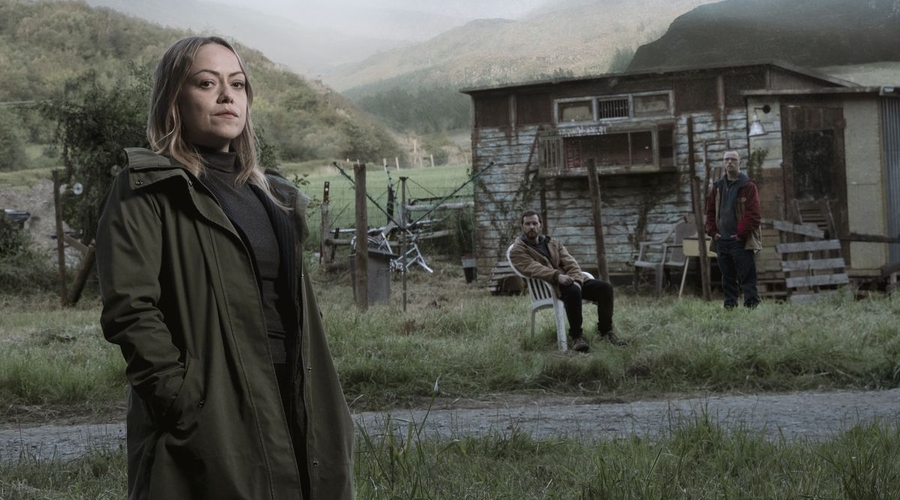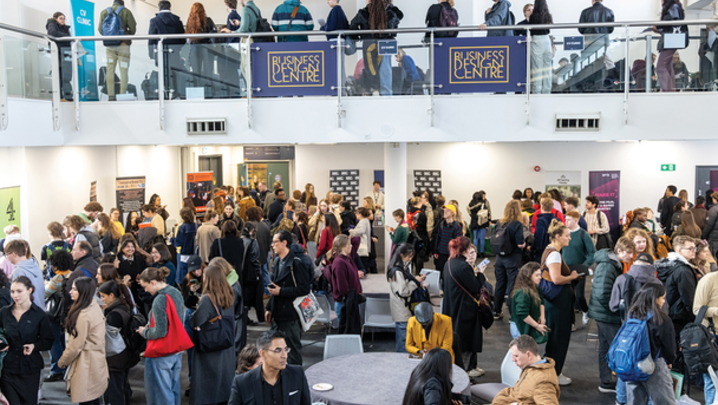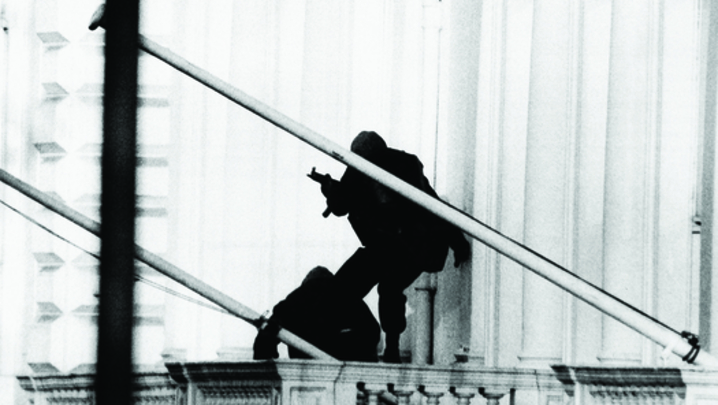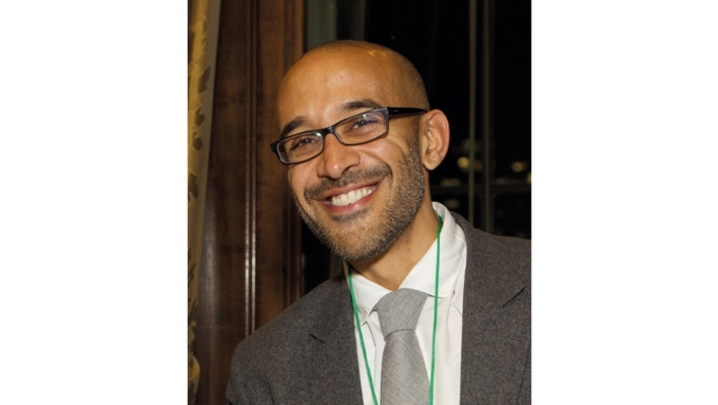Steve Clarke charts the rise and rise of Welsh noir, crime stories that are giving global audiences a taste of the exotic.
It’s not just the thought of competing in the World Cup this winter that’s giving the Welsh something to smile about in challenging times. On screens Welsh noir has put Wales on the global TV map and given the country’s film makers a new sense of confidence. These gripping, frequently harrowing, crime dramas that play out against the singular countryside of a nation renowned for its art and culture are now very much part of the TV landscape.
The latest of these series, the six-part thriller Y Golau, attracted no lesser actor than A-lister Joanna Scanlan who plays Sharon, the mother of a murdered teenager whose body has never been found and whose life is understandably haunted by the crime.
Y Golau’s original Welsh-language version made its debut on S4C in May and will be shown – in English – as The Light in the Hall on Channel 4 later in the year.
“We’ve claimed Welsh noir as our own genre and are looking forward to doing more and looking to new genres for our dramas as well that represent a modern Wales,” says S4C’s head of drama Gwenllian Gravelle.
Almost a decade ago, another S4C show, Hinterland, single-handedly invented what became known as Welsh noir. The bleak and beautiful west Wales landscape provided the backdrop for what some reviewers saw as a Welsh Broadchurch. Angst-ridden detective DCI Tom Mathias, who makes Kurt Wallander look upbeat, finds melancholy and menace wherever he goes. Originally shown on BBC Four, the series was produced by Cardiff-based Fiction Factory and ran for three series and was later bought by Netflix.
“Before Hinterland, there was a feeling in Wales that we weren’t being allowed to tell our own stories,” says Ed Talfan, co-creator of Hinterland, and now creative director at Severn Screen. “It was hard to get home-grown narratives onto the network. S4C and BBC Wales were producing good work locally, but it felt like there was a lack of Welsh drama content making it across the border.”
“We were determined, with Hinterland, to make a series that would connect with audiences locally and internationally.

“The crime genre appealed to us on a creative level, but it was also the perfect Trojan horse: a genre that was popular with audiences across the globe, and one that also gave us an opportunity to showcase our culture, language and landscape.”
Talfan adds: “The partnership between BBC Wales, S4C and All3Media was crucial to the series’ success. The support of BBC Four in the UK was also key: its decision to screen the series next to shows such as The Killing and The Bridge in its Saturday night slot felt like a game changer.”
Ten years on from Hinterland, the local sector is continuing to grow in scale and confidence.
Talfan adds: “There’s been a transformation over the past 10 to 15 years. There is a huge amount of production going on across south Wales. I’d like to think Hinterland and other locally produced shows have played their part in that.”
Welsh noir – and Welsh drama in general – is in demand domestically and internationally. And the exoticism of these series is widely appreciated by global audiences. “The Welsh landscape is a key element – it is so distinct, versatile and spectacular - and for many of our buyers – exotic,” explains All3Media’s EVP of content, Maartje Horchner. “It is more than a backdrop in so many of the Welsh dramas we represent – and in the detective series it serves as a separate character in the storytelling. Long sweeping roads, rainy, moody grey skies, remote farms, and villages nestled amid granite hills and valleys. Deep, dark forests with waterfalls are perfect places to hide secrets or bodies.”
The US, Germany, Italy and Australia have all proved to be strong markets for Welsh noir.
Severn Screen produced Hidden, co-created by Talfan, and broadcast by S4C as Craith; the bilingual version was shown on BBC One Wales and BBC Four. The final series was broadcast in April.
He says: “Those dramas have a keen sense of place. They also have a distinctive pace. I see them as slow food rather than as fast food. I don’t say that pejoratively but it’s a different way of approaching drama. With Hidden, we took a slower look at characters and motivations. It wasn’t so much a whodunnit as a whydunit. To us, that felt more interesting.”
The fact that these shows are made in both Welsh and English was, according to Talfan, “borne in part out of necessity.” He explains: “The only way to make the show we wanted to make was to join the tariffs of different broadcasters and our distributor [AllMedia] and then deliver in two languages.” Streaming service Sundance TV is a partner on Y Golau.
S4C’s Gravelle, who has ambitions to make more single-language Welsh drama, acknowledges that, while filming all the scenes that have dialogue in Welsh and English is time consuming, the actors take it in their stride: “It’s seamless because most people in Wales are bilingual and go from one language to the other with perfect ease. Even though it takes a little bit more time, most of our actors are used to it.”
She adds: “A lot of our actors worked in theatre so it can be quite spontaneous. They know that they don’t want to do it 10 times. They come on set completely on the ball.…They can bounce off each other. Most people on set are bilingual. Even if they’re not fluent in Welsh, they’ve learnt a little over the years by working on our productions.”
If the grimness of these shows can seem a little daunting for those looking for a feelgood fix in our dark era, the S4C drama executive thinks it’s important not to overlook the gallows’ humour – or the fact that, like so many great scripted shows, escapism is key to their appeal.
Talfan agrees: “It’s trying to shoot the myth, rather than shooting the ordinary. One of the great gifts we had on the first series of Hinterland was that we worked with Polish director of photography Hubert Taczanowski. It was amazing how he came into the landscape of the county of Ceredigion. It was different to what he’d seen before – and he photographed it as if he was revelling in its extraordinariness. It set the tone and confirmed some of the ideas we were circling about trying to give the series a slight sense of the other.”
On Hinterland there was a deliberate policy to avoid what could be described as “franchise Britain” – no scenes containing homogenised high streets, supermarkets, or fast-food outlets – and so fashion a more timeless, fictionalised world.
Where, then, does Welsh noir go next? S4C has another one in development, which, once again, aims to provide a new twist on the detective drama. “Welsh noir is definitely here to stay because it’s in our DNA,” insists Gravelle. “We can punch above our weight by doing more shows of this ilk.”
Also expect to see the influence of Welsh noir in cinemas soon: S4C has invested in The Feast, a Welsh-language folk-horror movie with strong, brooding characters. It goes on general release in the UK in August.
Make no mistake, Welsh noir isn’t going to go away anytime soon.







